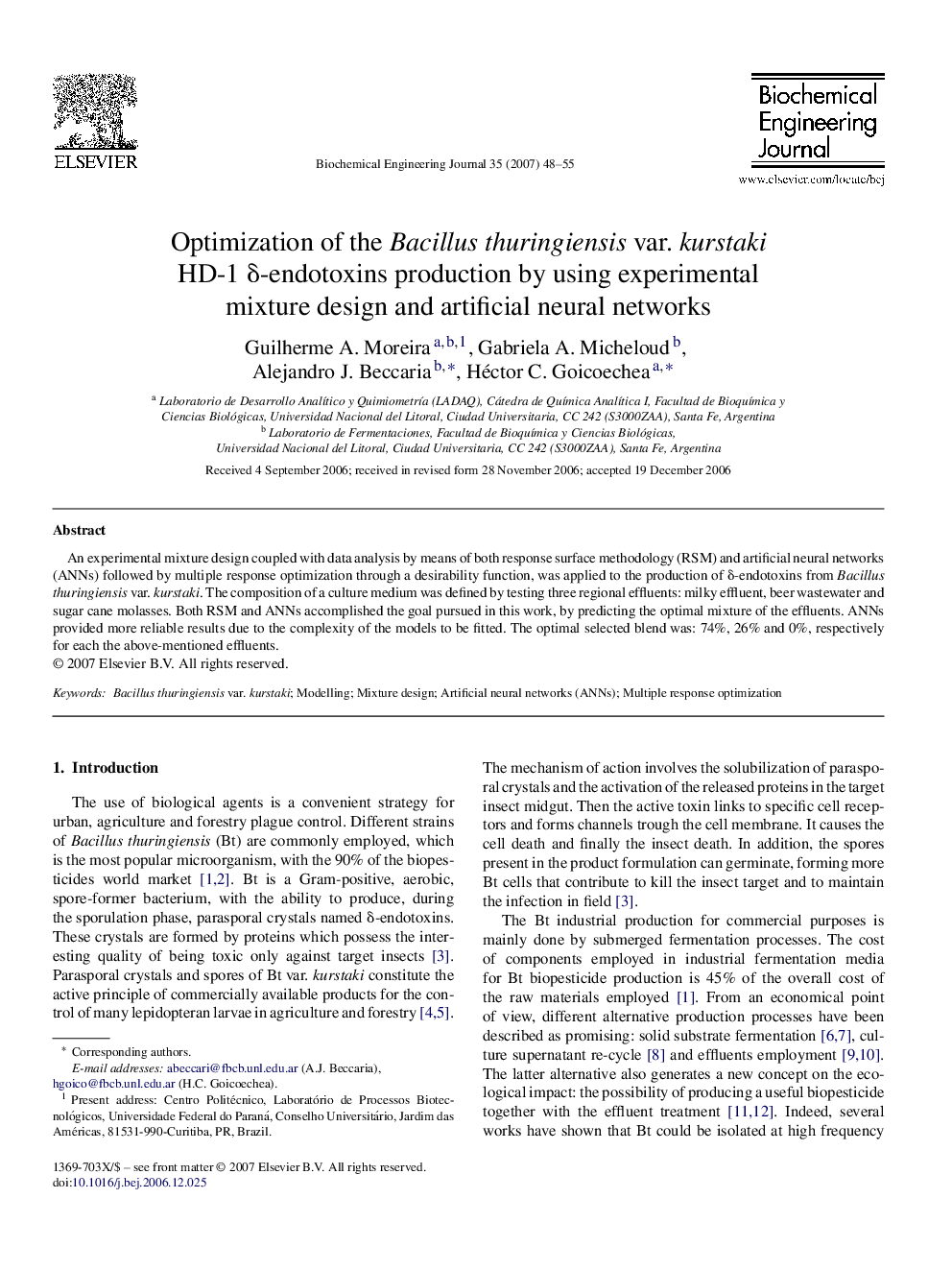| Article ID | Journal | Published Year | Pages | File Type |
|---|---|---|---|---|
| 4861 | Biochemical Engineering Journal | 2007 | 8 Pages |
An experimental mixture design coupled with data analysis by means of both response surface methodology (RSM) and artificial neural networks (ANNs) followed by multiple response optimization through a desirability function, was applied to the production of δ-endotoxins from Bacillus thuringiensis var. kurstaki. The composition of a culture medium was defined by testing three regional effluents: milky effluent, beer wastewater and sugar cane molasses. Both RSM and ANNs accomplished the goal pursued in this work, by predicting the optimal mixture of the effluents. ANNs provided more reliable results due to the complexity of the models to be fitted. The optimal selected blend was: 74%, 26% and 0%, respectively for each the above-mentioned effluents.
